Occupational environment monitoring at a soy sauce manufacturing factory
99,000 ₫
Note: The above price is calculated for one sample, and the price may fluctuate depending on the area of the environment to be monitored and market movements. For more accurate pricing support, please refer to the price list or contact our consulting staff directly.
Monitoring the environment of a soy sauce production factory is a session of collecting, analyzing, and evaluating workplace factors that may be harmful to workers’ health.
Table of Contents
Toggle1. Overview of Soy Sauce Production Factory
a. What is a soy sauce production factory?
Factory for soy sauce production is an industrial facility designed and operated to produce soy sauce or process soybeans to create related products such as soy sauce, dark soy sauce, red soy paste, or other sauces and seasonings. The soy sauce production process usually includes steps such as soaking soybeans, cooking soybeans, grinding, pressing to extract soy sauce, seasoning, and fermentation.
Soy sauce factories are usually equipped with systems and machinery for production, including cooking machines, grinders, presses, filters, and other devices. Modern technologies may also be applied to enhance production efficiency and ensure product quality.
Soy sauce factories often comply with food hygiene and safety regulations to ensure the final product is safe and meets quality standards.

b. Production stages in a soy sauce factory
The soy sauce production process in a factory usually includes the following stages:
- Soaking soybeans: Dry soybeans are soaked in water to soften and increase moisture. The soaking period usually lasts from several hours to overnight.
- Cooking soybeans: Soybeans are cooked in water until they become soft and easy to grind. Cooking helps break down proteins and starches in soybeans.
- Grinding: Cooked soybeans are ground into a mashed mixture. This process creates a soybean liquid that easily interacts with water and seasonings.
- Pressing to extract soy sauce: The mashed soybean mixture is placed in a press to separate soy sauce from solids. The pressing process may also involve filters to remove residues and impurities.
- Seasoning and fermentation: The soy sauce obtained from pressing is seasoned with salt, sugar, garlic, and other spices. Then, it undergoes fermentation where natural bacteria create the unique flavor and aroma of soy sauce.
- Processing and packaging: After fermentation, soy sauce may go through additional treatments (if necessary), such as boiling or distillation, to ensure safety and extend shelf life. Finally, it is packaged in jars, bottles, or pouches for distribution and sale.

c. Types of machinery used in a soy sauce factory
In a soy sauce factory, several types of machinery and equipment are commonly used in production stages. Below are some examples:
- Soybean soaking machine: Used to soak soybeans in water to soften and increase moisture before cooking.
- Soybean cooking machine: Used to cook soybeans at suitable temperature and duration to reach the required softness for grinding.
- Grinding machine: Grinds cooked soybeans into mashed mixture, preparing them for soy sauce extraction.
- Soy sauce pressing machine: Used to extract soy sauce from mashed soybeans. This machine often includes filters to remove residues and impurities.
- Fermentation machine: Used to ferment soy sauce, allowing natural bacteria to create fermentation processes and develop its distinctive flavor and aroma.
- Boiling and distillation machine: Used to boil or distill soy sauce after fermentation, eliminating bacteria and increasing product durability.
- Packaging machine: Packages processed soy sauce into jars, bottles, or pouches suitable for transportation, storage, and consumption.

d. Possible occupational diseases for workers in soy sauce factories
Workers in soy sauce factories may face some occupational diseases. Some examples include:
- Respiratory issues: Working in environments with smoke, dust, or vapors may cause respiratory problems. Workers may develop pneumonia or bronchitis due to exposure to irritants or chemicals used in soy sauce production.
- Skin issues: Continuous exposure to soy sauce and chemicals may cause skin irritation. Workers may suffer from dermatitis, eczema, rashes, or other skin conditions.
- Eye issues: Contact with chemicals or dust during production may lead to irritation, infections, or eye injuries, especially if protective gear such as safety glasses or masks is not used.
- Ear issues: High noise levels in soy sauce factories may cause hearing damage or difficulties if workers do not use protective equipment.
- Musculoskeletal issues: Repetitive movements, heavy lifting, and working in uncomfortable positions may cause musculoskeletal disorders such as back pain, shoulder pain, or neck strain.

e. Common types of soy sauce on the market
There are many common types of soy sauce available on the market, with differences in ingredients, flavor, and origin. Some popular types include:
- Chinese soy sauce: Originating from China, this soy sauce usually has a strong flavor, high saltiness, and is widely used in Chinese cuisine and other Asian dishes.
- Japanese soy sauce: Japanese soy sauce has a delicate and refined flavor. It is often used in Japanese cooking and also as a condiment or dipping sauce for sushi, sashimi, and udon noodles.
- Korean soy sauce: Known as “ganjang” in Korean, this soy sauce is usually strong and salty. It is a key ingredient in many Korean dishes such as kimchi, bibimbap, and bulgogi.
- American soy sauce: American soy sauces vary widely, from strong-flavored to mild and balanced versions. They are often used in both Asian and Western dishes, including stir-fried noodles, grilled meats, vegetarian meals, and instant noodles.
- Vegetarian soy sauce: This type does not contain animal ingredients and is commonly used in vegetarian cuisine or as a seasoning for vegetarian dishes.
Other soy sauce varieties differ depending on geographical regions and nutritional requirements, with variations in main ingredients, salt levels, sweetness, and flavor.
2. Overview of Occupational Environment Monitoring Services
a. What is occupational environment monitoring in soy sauce factories?
Occupational environment monitoring (or workplace environmental measurement) in soy sauce factories involves collecting, evaluating, and analyzing workplace environmental indicators to apply timely measures, reduce harmful effects on worker health, and prevent occupational diseases. Occupational environment monitoring is mandatory for soy sauce factories.
It plays the most important role in protecting and improving worker health because employees are the main resource directly generating enterprise profits. Workers who are frequently exposed to risk factors and occupational hazards beyond permissible limits will suffer health problems and occupational diseases.
REGISTER OCCUPATIONAL ENVIRONMENT MONITORING SERVICE
b. Nam Viet’s occupational environment monitoring program
Nam Viet’s occupational environment monitoring program is developed by monitoring engineers in labor safety and environmental protection. Aiming to ensure worker health and safety, this program applies modern measurement methods to monitor air quality, water, microclimate, physical factors, dust, and more in workplaces. It plays an important role in ensuring safe working environments and protecting worker health.
Additionally, Nam Viet’s monitoring program contributes to research and development of new solutions to improve workplace environmental quality. With the dedication and professionalism of its monitoring experts, Nam Viet’s exclusive program is becoming a breakthrough in labor safety management and environmental protection in Vietnam.

c. Standardization in workplace environmental measurement procedures
Standardization in Nam Viet’s workplace measurement procedures is a crucial aspect of ensuring quality results. To guarantee accuracy and reliability, this program follows recognized standards and procedures of the Ho Chi Minh City Department of Health. This ensures collected data can be reliably used for workplace evaluations and decisions to improve environments for worker health protection.
These standardized procedures are also carried out by qualified monitoring specialists with extensive experience, giving managers and experts confidence in An Toan Nam Viet’s results for making accurate and valuable decisions regarding worker health and environmental protection.
By applying standardization, Nam Viet demonstrates its commitment to ensuring safe working environments while positively contributing to labor safety management and environmental protection in Vietnam.
d. Reporting results of soy sauce factory monitoring
Monitoring results are prepared according to Form 04, Appendix III issued with Decree 44/2016/ND-CP and made into 2 copies: one sent to the enterprise signing the monitoring contract and one kept by the monitoring organization.
The storage period for occupational environment monitoring results is indefinite as required by law.

e. Frequency of occupational environment monitoring according to law
According to Clause 2, Article 18 of the Law on Occupational Safety and Health 84/2015/QH13, employers must conduct occupational environment monitoring to evaluate harmful factors at least once a year.
f. Deadline for submitting occupational environment monitoring reports
The submission deadline is before December 31 every year. Enterprises in production sectors must submit occupational environment monitoring reports to the Department of Health in the locality where their headquarters and employees are located.
When there are changes in technology, production processes, or facility upgrades that may create new harmful factors, enterprises must update occupational hygiene records with relevant monitoring requirements.
g. Penalties for violations of occupational environment monitoring for employers
According to Article 27 of Decree 12/2022/ND-CP dated January 17, 2022, on administrative penalties in the field of labor, social insurance, and Vietnamese workers working abroad under contracts:
- Clause 2: A fine of 2,000,000 – 5,000,000 VND for employers who fail to publicly inform employees at the monitoring site and workplace about monitoring results and hazard assessments immediately after results are available.
- Clause 3: A fine of 20,000,000 – 40,000,000 VND for employers failing to conduct occupational environment monitoring to control health hazards as required by law.
- Clause 4: A fine of 40,000,000 – 60,000,000 VND for employers collaborating with monitoring organizations to commit fraud during monitoring activities, without reaching criminal liability.
3. Harmful environmental factors for workers in soy sauce production factories
Workers in soy sauce production factories may be exposed to several harmful environmental factors. Below are some potential environmental factors that can affect workers’ health:
- Vapors, smoke, and dust: The soy sauce production process can generate vapors, smoke, and dust from cooking, pressing, and distilling. These may contain chemical compounds, bacteria, or other impurities that can irritate or damage the respiratory system.
- Chemicals: During soy sauce production, chemicals such as antioxidants, flavor enhancers, and preservatives may be used. Exposure to these chemicals can cause skin, eye, or respiratory irritation. Some chemicals may also have toxic effects if inhaled or exposed to for a long time.
- Noise: Soy sauce production factories may generate noise from operating machinery, pressing processes, and goods transportation. Continuous and high-level noise can cause stress, hearing impairment, and other health issues.
- Unsafe working conditions: Workers in soy sauce production factories may have to work in high-temperature environments, confined spaces, or difficult positions. These unsafe conditions can lead to occupational accidents, injuries, or other harm.
- Bacterial contamination: During production, soy sauce may come into contact with bacteria and impurities that can cause infections or diseases if not properly controlled and sanitized.
REGISTER FOR OCCUPATIONAL ENVIRONMENT MONITORING SERVICE
4. Measures to improve the working environment in soy sauce production factories
To improve the working environment in soy sauce production factories and protect workers’ health, the following measures can be applied:
- Conduct risk assessment: Evaluate harmful environmental factors in the soy sauce production process, such as vapors, smoke, dust, chemicals, and noise. Identify risks and workers’ exposure levels, and propose appropriate preventive measures.
- Provide protective equipment: Ensure workers are fully equipped with and properly use personal protective equipment such as safety glasses, masks, ear protection, gloves, and chemical-resistant clothing. Protective equipment helps prevent direct contact and inhalation of harmful substances.
- Improve working processes: Optimize production processes to reduce exposure to harmful factors. Adjust operations and equipment to minimize noise and reduce the spread of vapors, smoke, and dust in the workplace.
- Training and supervision: Provide workers with training on occupational safety and hygiene, including the use of protective equipment, safe working procedures, and recognition of potential hazards. Ensure supervision and compliance with safety regulations during production.
- Improve ventilation systems: Ensure an effective ventilation system to reduce vapors, smoke, and dust in the workplace. This may include upgrading exhaust systems, fans, and installing air filters.
- Sanitation management and bacterial control: Ensure that soy sauce production, storage, and sanitation comply with food hygiene regulations.
- Regularly conduct occupational environment monitoring in factories, collect and analyze harmful factors affecting workers, and then adjust to reduce hazards to prevent occupational diseases.
5. Benefits of periodic monitoring in soy sauce production factories
An Toan Nam Viet provides businesses with great benefits when using occupational environment monitoring services in accordance with Decree 44/2016/NĐ-CP on the management and control of harmful factors in the working environment affecting workers.
- Businesses can proactively control harmful factors in workshops or factories.
- Receive advice and recommendations on measures to minimize harmful factors and improve the quality of the working environment.
- Indirectly protect human resources, which are the main factor in business development.
- Reduce the impact of occupational diseases on human health, thereby lowering future medical costs.
- Improve workers’ health, leading to ensured and sustained product quality and output.
- Comply with occupational safety regulations, avoiding legal risks.
- Build credibility and professionalism in all aspects, thereby enhancing the business’s brand value.
An Toan Nam Viet’s environmental monitoring service is the solution to minimizing the impact of occupational diseases, contributing to a healthy and high-quality working environment.

6. National occupational environment monitoring center
Occupational environment monitoring center of An Toan Nam Viet is a professional unit specializing in monitoring and measuring occupational environment quality nationwide in Vietnam. With a team of experienced monitoring specialists, the center uses modern measuring equipment to ensure accuracy and reliability.
In addition to providing monitoring services, the center also supports clients in planning, handling, and tracking occupational environment issues. With the motto “customer-centered”, the center values customer satisfaction, meets all client needs, and is committed to providing the best solutions for businesses.
REGISTER FOR OCCUPATIONAL ENVIRONMENT MONITORING SERVICE
With investments in technology, equipment, and human resources, An Toan Nam Viet’s monitoring center has become one of the reputable units in occupational environment monitoring in Ho Chi Minh City with the following goals:
- We always value brand reputation and the quality of our services.
- We provide clients with the best and most suitable solutions possible.
- Together with our team of Masters and Engineers with extensive expertise, we aim to protect the environment and benefit businesses.
- By working with An Toan Nam Viet’s Monitoring Team, your company will receive professional service from experts in the field of monitoring, along with the best cost advantages.
The process of conducting occupational environment monitoring at An Toan Nam Viet includes the following basic steps:
- Before conducting occupational environment monitoring, we always ensure that machinery and equipment used are calibrated and adjusted in accordance with legal regulations.
- Comply fully with the occupational environment monitoring procedures committed to the Department of Health.
- Report monitoring results truthfully to employers.
- In cases where monitoring results show unsafe conditions for workers, An Toan Nam Viet will support with remedial solutions, and the workplace will implement as follows:
- Implement measures to improve working conditions to minimize harmful effects and prevent occupational diseases.
- Organize health examinations to detect occupational diseases and related illnesses early for workers in unsafe environments.
- Provide allowances in kind for workers in accordance with labor laws.

7. Occupational environment monitoring service quotation
To help businesses carry out occupational environment monitoring professionally and effectively, An Toan Nam Viet provides customers with a quotation for occupational environment monitoring services with high quality and reasonable costs.
- Our quotation provides detailed information on the costs of the monitoring services we offer, including expenses related to travel, measurement, analysis, and reporting. Clients can be assured of the accuracy and reliability of the monitoring reports we provide.
- We are committed to offering the most competitive and reasonable prices on the market, and we are always ready to provide quick and professional consultation for any inquiries regarding monitoring services.
- With An Toan Nam Viet’s quotation, clients can easily select service packages suitable to their needs. We are committed to delivering the highest satisfaction with our professional service quality.
No comments yet

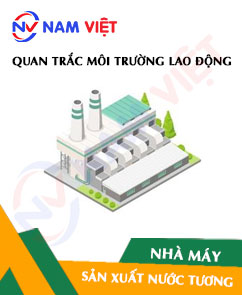
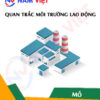
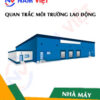



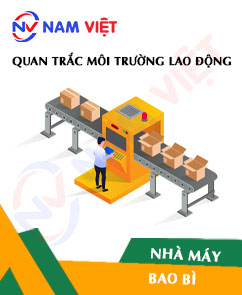
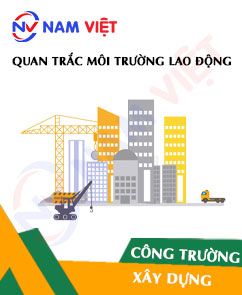
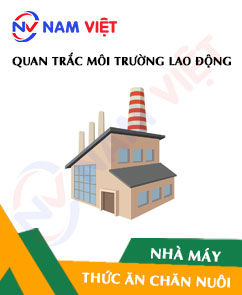
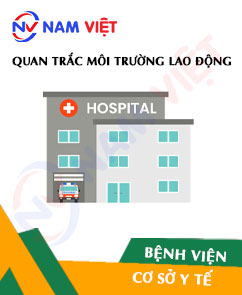

Review Occupational environment monitoring at a soy sauce manufacturing factory
There are no reviews yet.